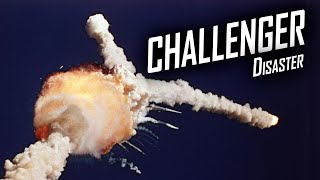The loss of Space Shuttle Challenger on January 28, 1986 was one of the most significant “where were you” moments in recent history. Like many schoolchildren across the country, maybe you were watching Teacher in Space Christa McAuliffe. Or like millions of others, perhaps you learned of the accident shortly afterward and tuned in to watch the endless replays of the horrific fireball in the clear blue Florida sky.
**************************************************************************************
Connect with me here ➡ https://solo.to/olhzn
MEMBERS GET BONUS CONTENT & EXCLUSIVE ACCESS
Patreon ➡ https://patreon.com/overlookhorizon
YouTube ➡ https://youtube.com/OLHZN/join
MERCH STORE ➡ https://teespring.com/stores/olhzn
#SpaceShuttle #Challenger #olhzn2MT
**************************************************************************************
The presence of Christa McAuliffe drew more public attention to this 25th space shuttle mission than had been paid to recent flights. NASA had successfully flown more than 20 successful shuttle flights, and the public had largely come to see the shuttle and spaceflight in general as routine. In fact, only one broadcast or cable network showed the moment when Challenger broke apart 73 seconds into the flight. Before Challenger, no American astronauts had been killed during a NASA mission. (Three astronauts died January 27, 1967 during a fire during Apollo training, and several others have died in airplane training crashes.)
President Reagan appointed a commission to investigate the Challenger accident. Former Secretary of State William Rogers led the group, typically known as the Rogers Commission. The Rogers Commission determined the cause to be “the failure of the pressure seal in the aft field joint of the right Solid Rocket Motor.” The failure was a result of a faulty design in combination with several factors, some of them weather-related.

